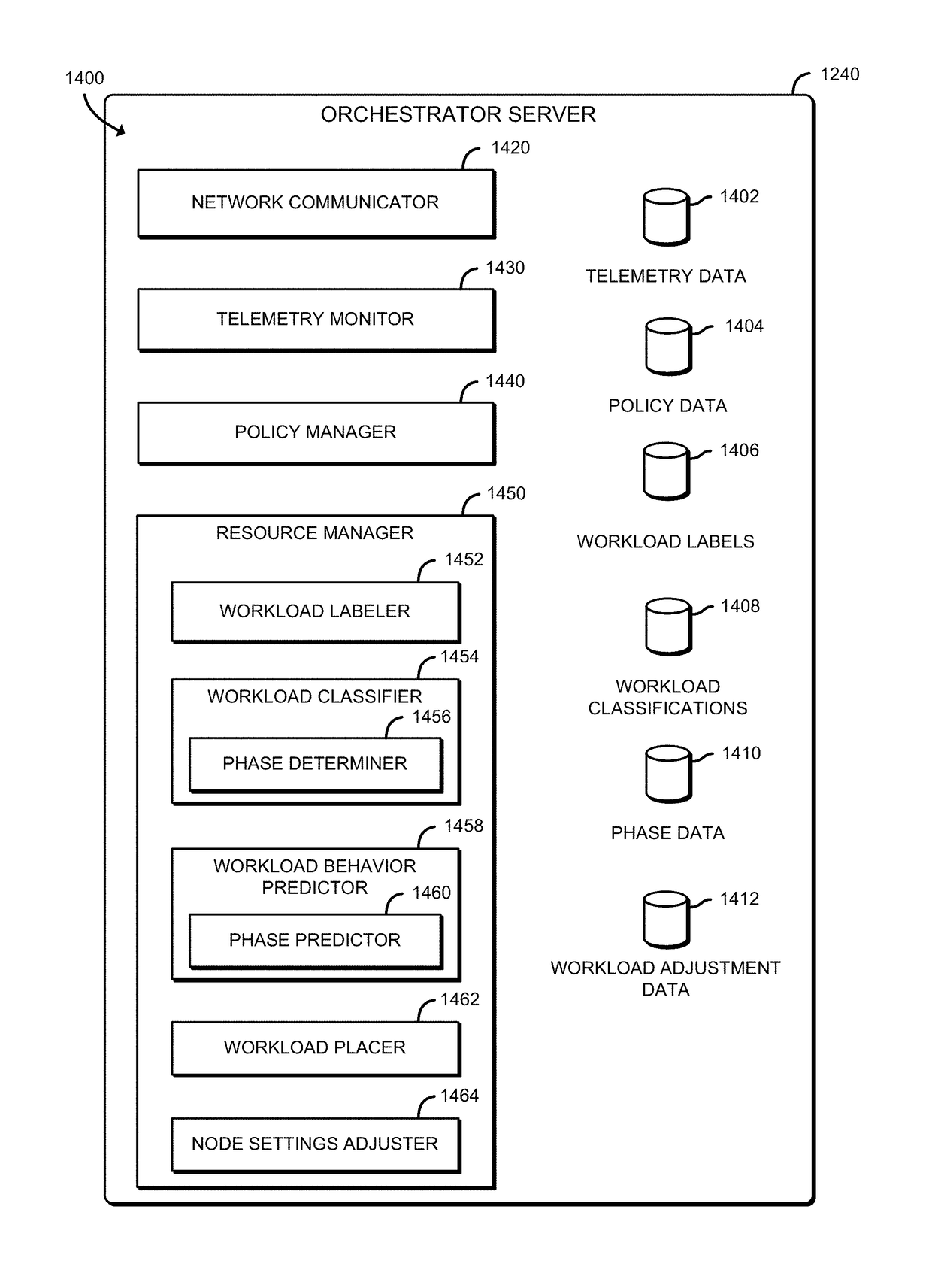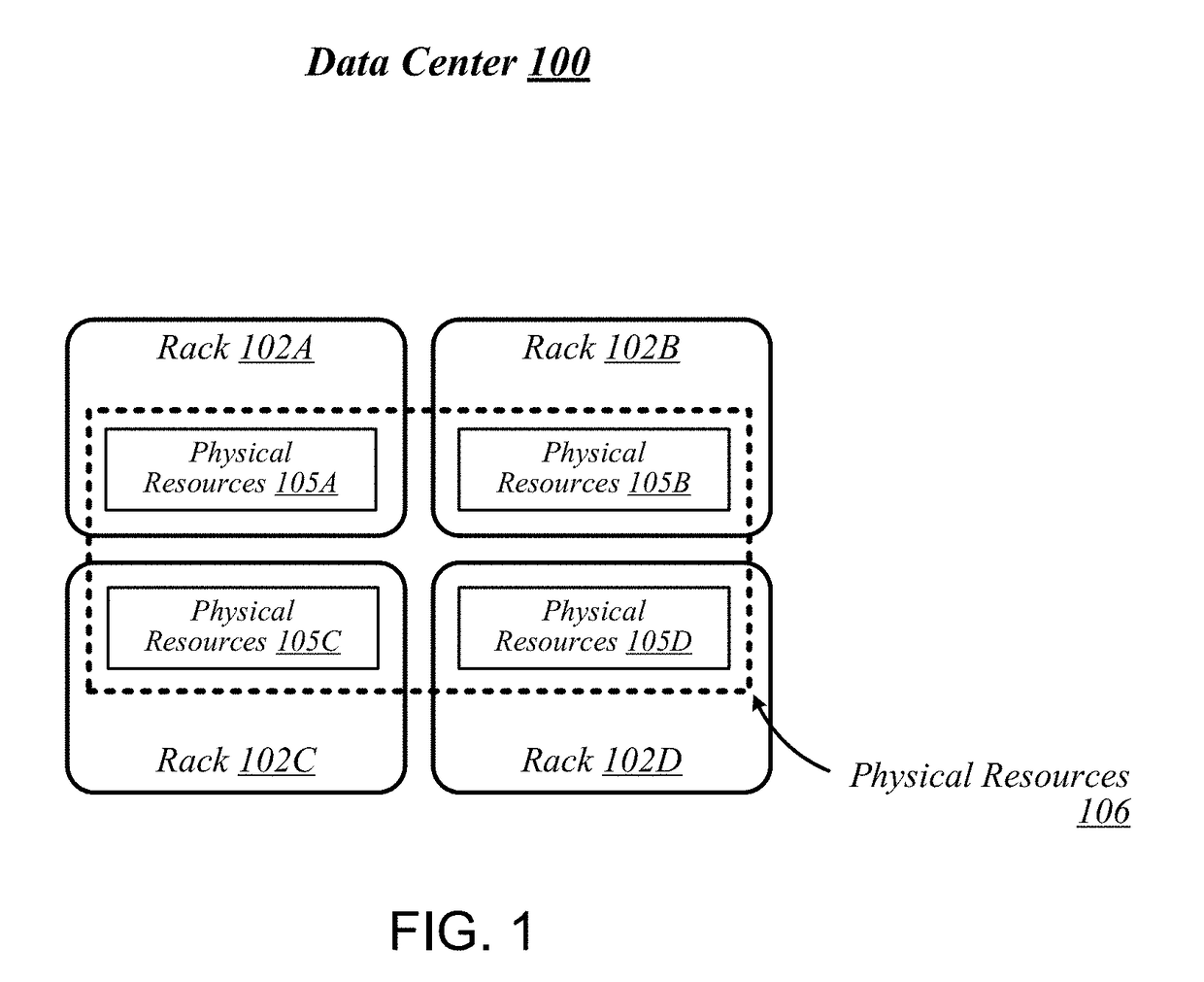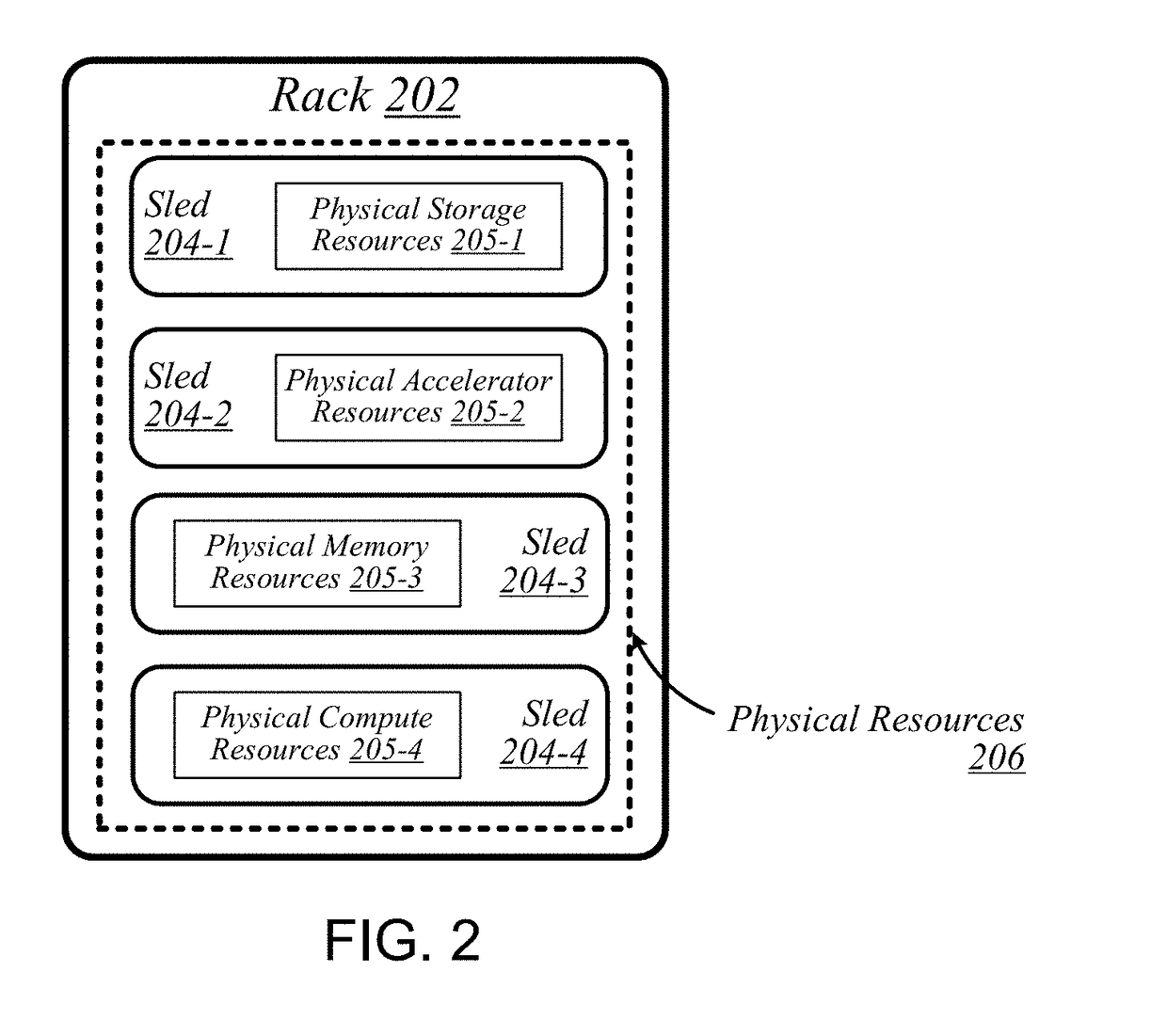Technologies for Assigning Workloads Based on Resource Utilization Phases
a resource utilization and workload technology, applied in the field of cloud-based computing environment, can solve the problems of workload not being carried out, resource (e.g., a component, such as a processor, memory, communication circuitry, etc.) available in a compute node may become overloaded, and workload may not be carried ou
- Summary
- Abstract
- Description
- Claims
- Application Information
AI Technical Summary
Benefits of technology
Problems solved by technology
Method used
Image
Examples
example 2
[0081 includes the subject matter of Example 1, and wherein to identify a historical resource utilization phase comprises to determine that the historical resource utilization phase is one of processor intensive, memory intensive, or network bandwidth intensive.
example 3
[0082 includes the subject matter of any of Examples 1 and 2, and wherein to determine a predicted resource utilization phase comprises to determine that the predicted resource utilization phase is one of processor intensive, memory intensive, or network bandwidth intensive.
example 4
[0083 includes the subject matter of any of Examples 1-3, and wherein to apply adjustments to the assignments of the workloads comprises to assign one of the workloads with a first type of predicted resource utilization phase and a second one of the workloads with a second type of predicted resource utilization phase to the same managed node for execution during the future time period.
PUM
 Login to View More
Login to View More Abstract
Description
Claims
Application Information
 Login to View More
Login to View More - R&D
- Intellectual Property
- Life Sciences
- Materials
- Tech Scout
- Unparalleled Data Quality
- Higher Quality Content
- 60% Fewer Hallucinations
Browse by: Latest US Patents, China's latest patents, Technical Efficacy Thesaurus, Application Domain, Technology Topic, Popular Technical Reports.
© 2025 PatSnap. All rights reserved.Legal|Privacy policy|Modern Slavery Act Transparency Statement|Sitemap|About US| Contact US: help@patsnap.com



